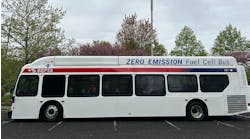Islamabad: The government, in close collaboration with the World Bank, is preparing a detailed road map for revitalizing the cash starved Pakistan Railways that requires a multi-billion dollar injection over the medium to long term to ensure a complete turnaround.
The government had constituted a Core Team, as specified by the Planning Commission, which was assigned to formulate a Pakistan Railways Issue Note (PRIN) based on a rapid governance analysis. According to the PRIN executive summary Pakistan Railways (PR) has been facing serious crisis since 2007-08 as its passenger traffic reduced by 16 percent and freight traffic (on a tonne-kilometer basis) by 70 percent.Revenues of PR has fallen by 6 percent while working expense increased by 80 percent with labor related costs and pensions being 120 percent of revenue in 2010-11.
Under the current organization structure and financial arrangement, the executive summary states, it would be very difficult for PR to even return to break-even on working expenses without radical surgery. In the absence of substantial reforms, PR will almost certainly suffer a continuing decline, slowly but steadily becoming almost irrelevant to the general economy of the country.
According to the Core Team this needs to be so as PR has the fundamental requirement for a viable railways (long hauls, potential demand, good infrastructure and trained staff) exist, but the underlying problem that needs to be addressed is that PR cannot continue on the assumption that it is a government department administering a monopoly. "Any monopoly is long gone and PR will go also unless it is restructured, both organizationally as a commercial business," it further recommended.
The PRIN draft summary states that such a situation requires both short and long term actions as in 2011, the number of locomotives available for use reduced by average of 10 each month. By August, only 8locomotives were available for freight and 140 for passenger services compared to 100 and 170 respectively in 2008. The repair of locomotives needs to be accelerated as it will at least slow the financial hemorrhaging as each locomotive earns Rs70 million per year on passenger services and Rs120 million on freight services that is far more than the cost of the spare parts required to keep them in service and the fuel consumed if they do operate.
The summary poses question that in the medium term stable and predictable funding arrangements needs to be put in place but in the longer term the government must address that fundamental issue of whetherPR is a government department or a commercial business. If it decides the former, PR will eventually wither away becoming an organizationrun solely for the benefit of staff. If it decides the latter, PR needs a major reorganization both organizationally and financially, so that it can compete effectively in the marketplace.
The Planning Commission in collaboration with Ministry of Railwaysand Pakistan Railways, supported by the WB, is preparing a strategy to outline steps required to revitalize the country's rail system with focus on political economy of implementing its strategy.
On other side the Cabinet Committee on Restructuring (CCOR) decided to provide Rs.600 millions to Pakistan railways to pay the Wapda dues. The CCOR decided to increase the credit limit of Pakistan Railways from PSO and also decided to ensure subsidy to cover the bill of salaries and pension.
The CCOR also directed Pakistan Railways to utilize the funding from their PSDP allocations. The CCOR also discussed the fast track appointments of CEO and CFO and early establishment of board..
Copyright 2008 LexisNexis, a division of Reed Elsevier Inc. All rights reserved.
Terms and Conditions |Privacy Policy


